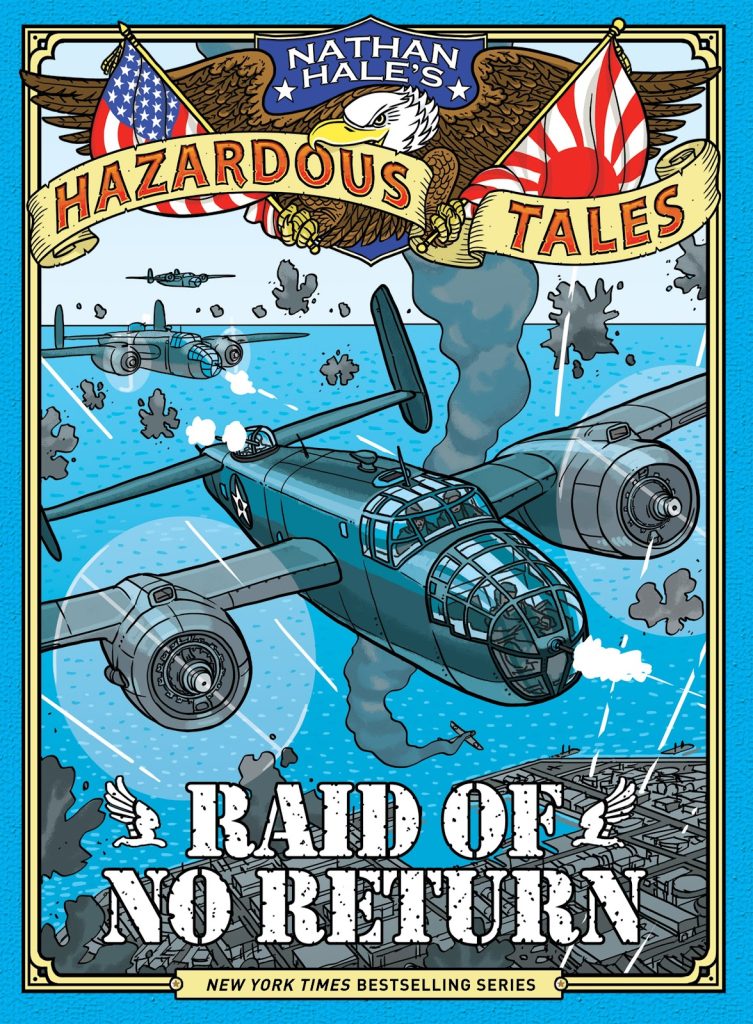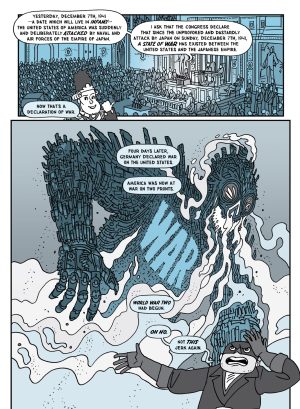Review by Frank Plowright
Nathan Hale’s Hazardous Tales present the complexities of history in relatively easy to digest form by creator Nathan Hale using the ghost of his 18th namesake (and his irritating hangman) as guides.
Raid of No Return features the Japanese attack on Pearl Harbor, and immediately sets itself apart from most portrayals in graphic novels by not starting with 1941 raid itself, but on the Japanese preparations beforehand. Hale contextualises their confidence by noting Japan had won every war they’d undertaken in the preceding hundred years, whether alone or with allies.
By 2017 Hale’s books had long stood for the quality of research and accuracy, which makes the indicia page declaration of this being a work of fiction involving fictional characters strange, although covers the use of dialogue supplied to real people. Hale has his namesake and others observing events and commenting on them through the mists of time, but Admiral Yamamoto and Franklin Delano Roosevelt weren’t fictional. Or have they been fake news all along?
Having dealt with the attack, Hale moves on to the American response in depth, from the entirety of the radio speech given in the aftermath by Eleanor Roosevelt, to the training of pilots to launch a B52 bomber from under 500 feet at 50mph. Hale keeps the art simple for maximum comprehension, but when detail is called for, such as the device used to sight targets for bombers, it’s presented with all parts depicted. Detail is also astonishing on a spread showing the exact positions of craft at Pearl Harbor prior to the attack. It’s so good, it’s repurposed on the following page to display the devastation.
Hale doesn’t just deal with historical fact. He shows how life is aboard an aircraft carrier and a submarine, along with the bleak graffiti scribbled on bombs. The raid of no return doesn’t refer to Japanese kamikaze pilots, but an American mission to bomb sites in Japan to cripple the country’s ability to make war. It wasn’t expected that any of the planes would make it back to the aircraft carrier, and those aboard would have to take their chances bailing out.
That’s not the end of the story, as Hale takes readers through the fates of those on every plane that survived the raid, providing some amazing stories. A few minor errors creep in (‘Iran’ for what was then Persia), but this is another first rate graphic novel making history accessible.





